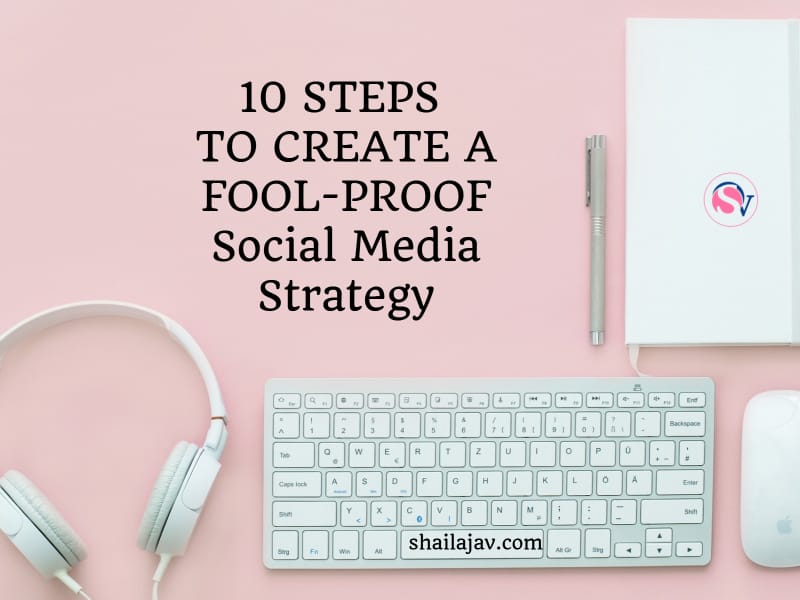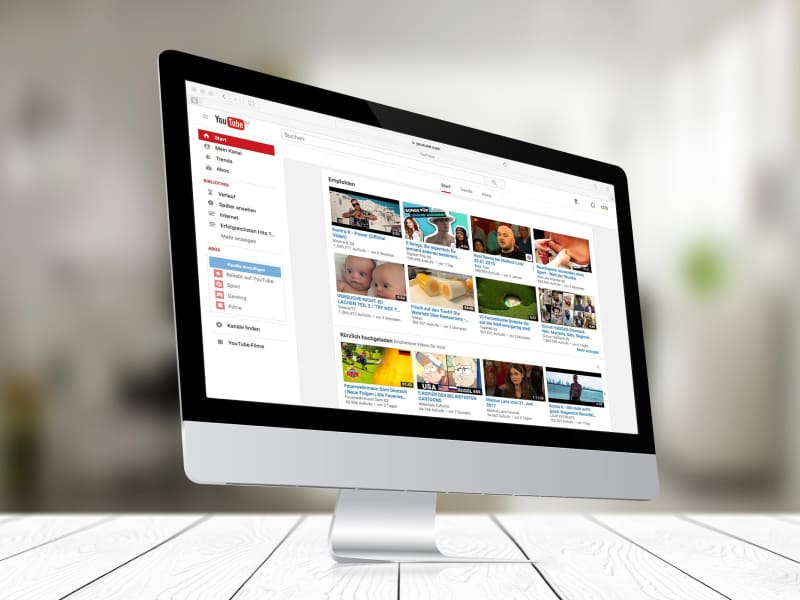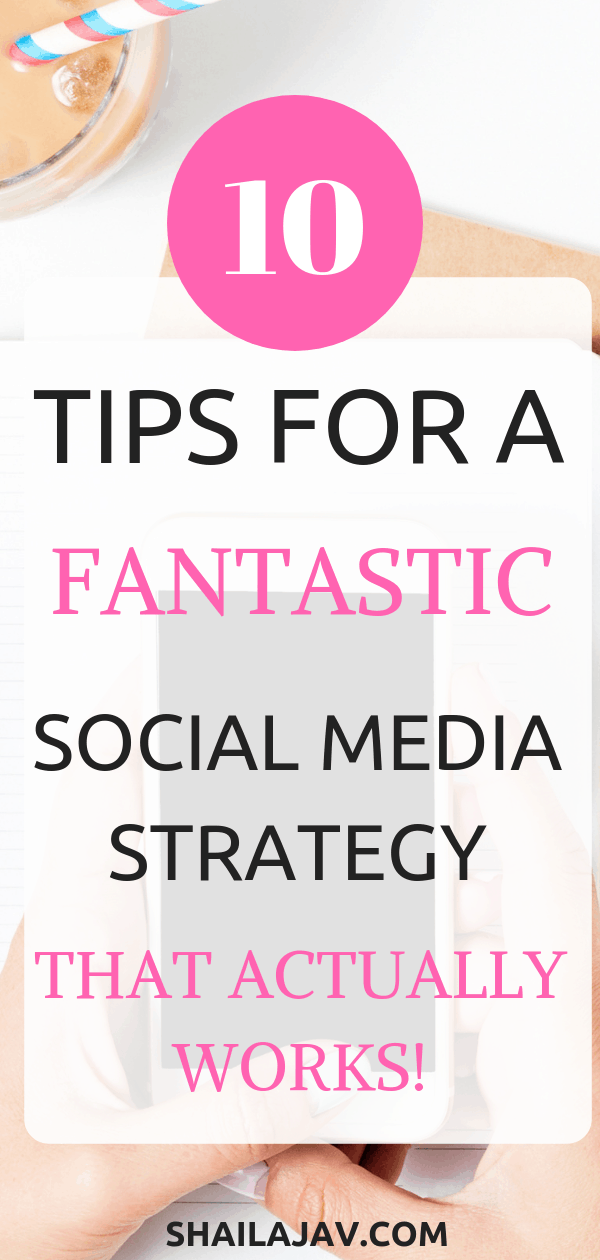Everyone wants results, especially if they’re in the blogging and digital space. Everyone wants results overnight; that’s the problem. But, what if you approached your blog and social media with a goal? Create a road map of sorts that would help you plan your content, fine tune your work and present it to an audience. That’s where a social media strategy comes in.
Now these principles are applicable no matter which platform you choose, so you just have to keep that in mind before reading ahead.
For the purposes of personal examples and experience, I have chosen to showcase Pinterest in this post. Technically, it’s not a social media platform, but the basic tenets remain the same, when you’re creating your content marketing plan.
This post contains affiliate links, which means I will make a commission at no extra cost to you should you click through and make a purchase. Read my full disclosure policy here.

[easy-tweet tweet=”10 Steps to Follow a Fool-Proof Social Media Strategy that actually works!” user=”shyvish”]
Pick One Platform

I can’t emphasise this enough. It’s important that you pick one social media platform to focus on. Once you’ve picked it, stick with it for a minimum of 30 to 60 days to see returns. Then, try another platform.
It’s very tempting to try every platform possible because people say they get great results from each of them.
But they’re not telling you two things:
- They have not done it all at once. They worked on each platform sequentially, not simultaneously.
- Not everyone has an audience on every platform.
Depending on your niche you need to figure out if your target audience is on that social media platform or not.
For instance, if you are a food, lifestyle, fashion blogger, then you need to check out Instagram and Pinterest.
If you are in the entrepreneur, branding, business niche you must check out Linkedin and Pinterest.
If you write on Parenting, you must focus more on Facebook and Pinterest.
If you’re a writer or author, you’d get more leverage from Twitter and Pinterest.
As you can see, I put Pinterest as an option everywhere because that is one space which works for pretty much every niche!
* This post contains links to the Amazon affiliate program. As an Amazon Associate I earn from qualifying purchases. Read my complete disclosure agreement here.
Set SMART goals

You’ve probably heard of setting SMART goals and the image above explains what that means.
In terms of social media strategy, let me break down what this means. Again, I am going to focus on Pinterest for this post.
Specific: Pinterest is primarily for driving traffic to the blog. So you need to set specific goals in terms of number of page views you want from there. Other specific goals to track could be number of profile views, number of followers or number of impressions.
Measurable: Use the Analytics feature in Pinterest to measure your growth. See if you’ve hit the goals you set for yourself.
Achievable: This is very important. If you set yourself a goal of 100,000 page views in a 30-day window, it can be discouraging if you don’t hit that. Keep it simple and manageable.
Realistic: How much time can you spend on Pinterest daily to make this happen? Are you working? Are you maybe a new mom? All these things matter. Stay realistic.
Trackable: If you can’t track your goals, there’s no use having them. Make sure you keep notes and track them regularly.
BUY: The One Hour Content Plan by Meera Kothand is a power-packed e-book that gives you generous content ideas!
Read Posts by the Experts

One thing I enjoy doing in the blog and social media space is to keep learning. Since this is a highly organic and evolutionary form of learning, it makes sense to keep in touch with updates from the experts.
Here’s what I do.
I sign up for Newsletters by people I trust and whose strategies have helped me grow my brand.
Then, I track their blogs and social media pages and study how they engage with their audience. If they have a Facebook group, I join that as well.
For Pinterest, I follow the tips given by these people. Sign up for their newsletters and of course, follow them on Pinterest. You’d love them!
Watch Videos

There’s something about visual content that helps connect the dots in the digital learning space.
Have you noticed that you are able to understand something with more clarity when you watch a step-by-step video? Right? Me too! 🙂
Videos are great fun to watch and you end up learning quite a bit about social media strategy too. Most of the people I listed above do a fabulous job of instruction through videos.
And these don’t necessarily mean high-quality videos on YouTube either! They do Facebook Lives, Instagram Lives or IGTV and it’s quite the visual treat.
A couple of people in my private Facebook group appear to enjoy my Learning Units too 🙂 Here’s a sample of what that looks like.
Click here to join my FREE Facebook group.
Listen to Podcasts

When I dove into Pinterest back in November 2017 I did so with Kate Ahl’s ‘Simple Pin Podcast’.
Take it from me. You don’t need any other podcast if you want to grow your Pinterest presence. Her tips are spot-on, priceless and very much up to date.
I’ve learnt a lot from the podcast that I’ve not learnt anywhere else. A lot of my pinning strategy is dependent on her podcast and a course that I purchased last month, which is the subject of the next tip. 🙂
Click here to read about my 20 favourite podcasts for bloggers.
Invest in a Course

I realise that blogging is a hobby for many of us. But for those of you who would like to make money from your blog, it is important that you make a smart investment if you’d like to see actionable returns.
One of the earliest investments I made for my blog (specifically for Pinterest) was signing up for a Tailwind Account. Ever since I joined, 12 months ago, here are the results for my account:

Read more about Tailwind for Beginners.
But the thing that truly blew me away was this one course I bought last month during the Black Friday sale and that is Pinteresting Strategies by Carly Campbell!

It’s a genius course that takes you through the ins and outs of Pinterest growth and the good thing? It’s a manual pinning strategy! So if you’re not in the market to shell out money for a scheduler right now, I highly recommend you go ahead and invest in Carly’s course.
Here’s a screenshot of my Pinterest Analytics for the last 7 days. I bought the course on November 24th and started applying the strategies on November 25th. See the growth? 🙂

Pins from my website were viewed an average of 18,000 times on December 1st. On November 25th, that number was 9,000. That’s a 100% growth!
The best part about the course?
- It only costs $47 and that’s a one-time investment.
- The course gets lifetimes updates.
- You can start it whenever you want once you buy it.
- You can ask questions in her Facebook group and get immediate answers.
Like I said, Best investment this year! Go ahead and buy it.
Take Notes

I’m a big fan of note-taking 🙂
Writing things down helps me see with clarity what part of a strategy works and what doesn’t. If you can invest in a paper and pen planner and write down specific goals for each social media platform.
I just invested in a Blog planner for myself and love how it looks.
The other one that I have bought is this brilliant and detailed planner by Meera Kothand, called the Create Planner. This one includes specific sections for social media strategy.
Implement Strategies

It’s all very well to listen to podcasts and read posts and buy courses.
But none of those things will work unless you make time to implement what you’ve learnt.
Set aside 1 hour a day for learning. 30 minutes of that should be spent on studying content. 30 minutes should be spent on implementation.
Doing this in regular doses everyday will ensure that you have a working social media strategy. Consistency is key on any platform. The same is true of your blog too.
Track your Performance

The next thing you need to do is to figure out whether or not your strategy is working.
For that you must create a benchmark, a starting point and an end goal.
For instance, on Pinterest, you can set a time frame of 30 days.
Study how many page clicks you are getting to your website on day 1. Set a simple goal for the end of the 30-day period. Aim to increase it gradually. That way, you aren’t setting yourself up for defeat.
Track growth only once a week or once a month. Any less than that and it’s not enough data to help with your strategy.
Revise your Social Media Strategy

Be ready to change a strategy if it doesn’t yield the expected results.
But remember to track your progress and also check the parameters that you used for the previous period.
Also, be confident enough to give up on a platform if you feel that it doesn’t give you enough returns on your investment.
The one thing you must keep in mind is that each platform has different audiences, with different needs. So what works on Facebook won’t work on Instagram. Short and snappy content works on Twitter while long-form articles work on Linkedin.
Remember to be open to change. That’s the most important part of a successful social media strategy.



Damn! You said Twitter for writers/authors…it’s the one I struggle with the most. I’m okay to use Twitter to share links and occasional rants but because it moves so quickly, I feel like it’s not one I can follow consistently. I do prefer Instagram and am definitely way more active on that {so my phone tells me!}. In the end though, as you said, it is about focusing on one platform at a time. Great tips there Shy, and the planner looks cool.
He he, I know, right? Actually Twitter is the best for writers and authors. The networking, the pitching, the tips from other writers. It’s simply fantastic. What I’d recommend is follow hashtags instead of the scrolling feed. Ones I recommend are #Writing #AmWriting #PitchWars #AmReading
Thanks for the feedback, Sanch and I LOVE the planner too 🙂
Smart goals – seating sustainable and achievable goals seem to wokr for every thing. Blogging – fitness, kids etc.
I don’t really track my progress / no privy and that’s something I really need to work on!
Also, the visual really does tend to give you a better understanding. But, does that mean blogging will take. A back seat 🙁
Zainab, not at all! Blogging and social media go hand in hand. It’s a question of how much time you’re setting aside for blogging and how much for social media promotion. If the two together are not working towards an unified strategy, then something must change.
Small steps- it’s doable, I promise 🙂
Smart goals – seating sustainable and achievable goals seem to wokr for every thing. Blogging – fitness, kids etc.
I don’t really track my progress / no progress and that’s something I really need to work on!
Also, the visual really does tend to give you a better understanding. But, does that mean blogging will take. A back seat 🙁
Great tips
Thanks, Yogesh 🙂
Useful tips Shailaja.. I have made my notes from this post, and will get to implementing them. I stick to my favourite social media which is Pinterest and instagram. It works well with regards to books. I do try and follow others in the niche to understand their behaviour, pattern and reach. It sure seems to be helping me :))
Oh yes, Instagram AND Pinterest work very well for books, especially book reviews, which is your main niche. Glad to hear that following others is helping you. Nothing like that to learn. Good luck Ramya 🙂
Hi Shy, I’m in your space after a really long time and the first thing I noticed was the absolutely fab look of your blog!! I have been one of those searching desperately for ways and means to stay afloat in this world of blogging and this post has come at the right time. I haven’t explored Pinterest yet (I know, I know…) and it is interesting to know that Pinterest is so versatile! I think there’s a post here on how to get started on Pinterest which I’m hoping to read soon. Thanks for this informative post!
Thank you so so much, Shubhangi 🙂 Welcome to my new space. Special Thanks to Sid for making it happen. He did a lot of the heavy lifting. I am thrilled you like the look.
Let me know if you have any other questions related to Pinterest or blogging. Would be glad to help.
A lot of things to learn when reading your post. Really amazing.
Thank you for reading!
Thanks for the tips! I’m trying to start a fitness blog so these will be really helpful!
Thanks Dirk! All the best and let me know if you have any other questions.
I completely agree with all of these points! I am a new blogger and new to all of this and have learned so many things by setting the time aside to actually research and see others that have succeeded and how they got there rather than going crazy trying to figure it out on my own.
This is really one of the best article ever.Any business could implement at least one of these content types immediately and get results.
It’s really great information for becoming a successful blogger, Keep sharing, Cheers!
Minosh.